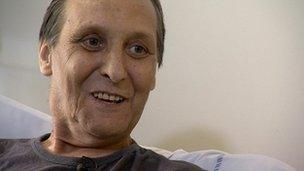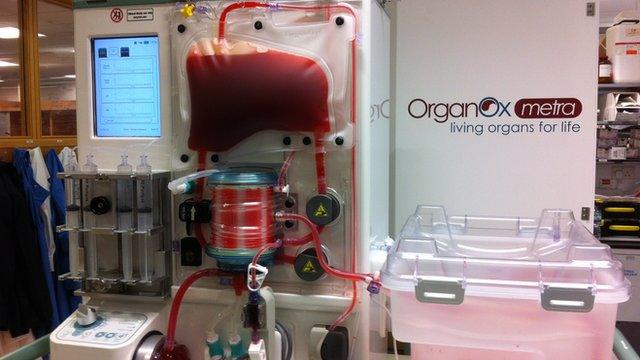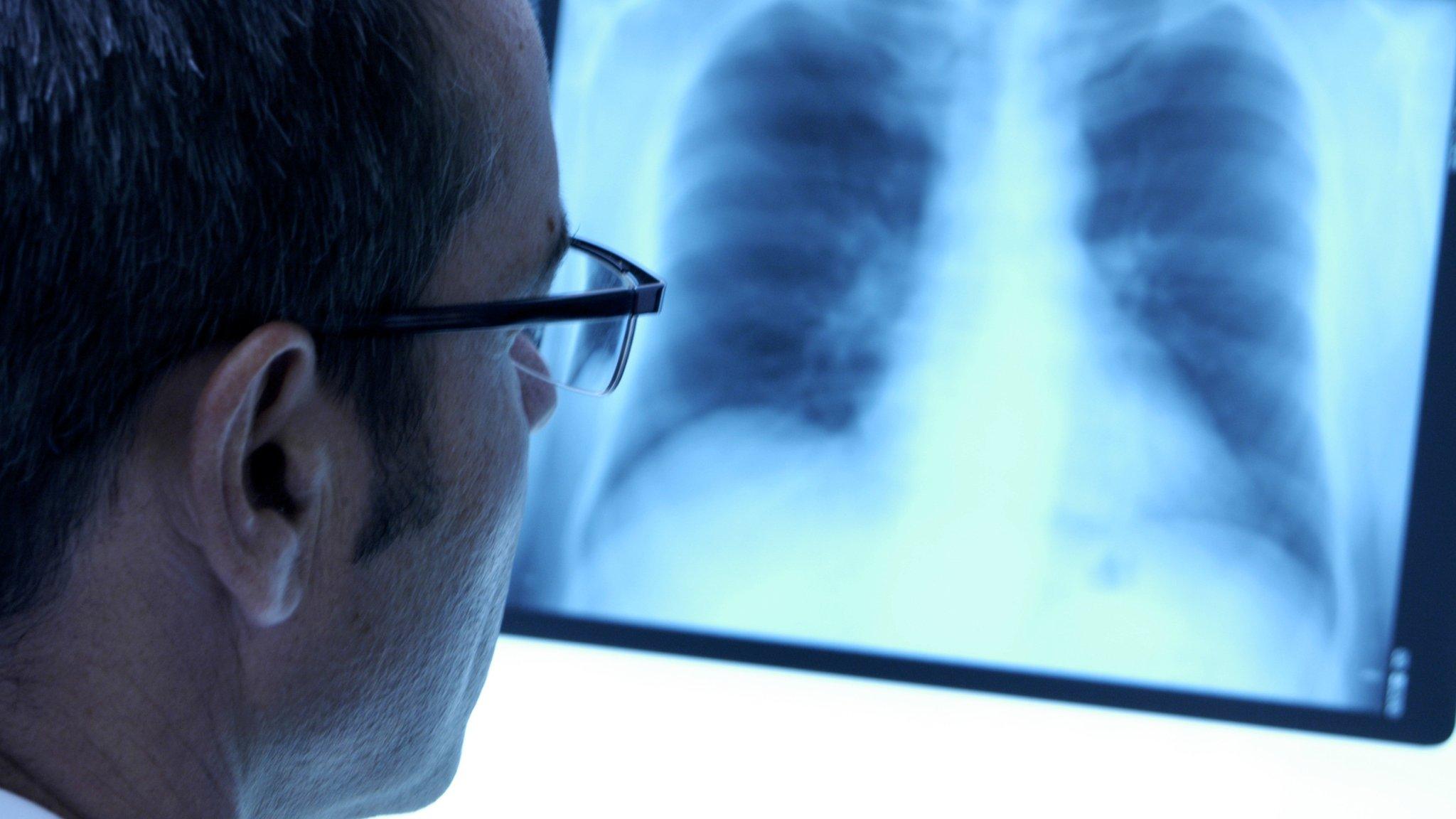'Warmed liver' transplant first
- Published
- comments
Prof Constantin Coussios explains how the liver perfusion machine works
Surgeons in London have carried out the first 'warm liver' transplant using an organ which was 'kept alive' at body temperature in a machine.
Usually donor livers are kept on ice, but many become damaged as a result.
The patient, 62-year-old Ian Christie from Devon, is doing well after the operation at King's College Hospital. , external
The technology was developed by scientists at Oxford University who hope it could increase the number of livers available for transplant.
Its inventors are an engineer and a transplant surgeon.
Prof Constantin Coussios of the Department of Engineering Science has been working on the project for 15 years in partnership with Prof Peter Friend, of the Nuffield Department of Surgical Sciences.
After being removed from the donor, the liver is placed in the machine and tubes are connected to the main blood vessels. Oxygenated blood and nutrients are pumped through the liver which continues to function and produce bile.
Prof Peter Friend said: "It provides an environment where the donor liver hardly knows it has left the body. Instead of cooling it to slow its metabolism we keep it functioning at normal temperature and with oxygen and nutrition."
At present many donor livers are rejected for transplantation because they are damaged. Some have been deprived of oxygen while others contain too much fat and do not survive the cooling process.

Ian Christie says he feels better than he has for years
The Oxford inventors say their machine allows the liver to recover from damage it has sustained and enables medical staff to test the viability of the organ to see whether it is likely to work before being transplanted into the patient.
Ian Christie, the first patient to receive a liver using the new technique contracted hepatitis C from a blood transfusion 25 years ago, before blood could be screened for the infection. He developed liver cirrhosis and was told last year that without a transplant he might have about 18 months to live.
Mr Christie, who had the surgery last month, said: "I feel very proud and lucky to have been part of this medical advance. My health is better than it's been for years and I feel I can go on now instead of thinking that life is finished for me."
A second patient who received a liver using the same technique is also said to be doing well.
The livers given to Mr Christie and the other patient were preserved for five and nine hours respectively, but the Oxford team believes its system could allow donor livers to be maintained for much longer.
Save lives
About 700 liver transplants are carried out in the UK each year, but more than 100 patients a year die while on the waiting list.
Prof Coussios said: "In experiments we have shown we can preserve a liver and monitor its function outside the body for periods up to 24 hours. By contrast livers kept on ice have to be transplanted with 10-12 hours at most."
If livers could be preserved for longer it would allow teams to organise transplant surgery more effectively and to find the ideal recipient.
King's College Hospital performs more than 200 liver transplants each year making it the largest unit in Europe.
European trial
Wayel Jassem, transplant surgeon who performed both operations, said: "I was impressed to see how quickly each liver started to function following the transplant. This technology has the potential to be hugely significant and could save lives."
But the inventors in Oxford and the transplant team in London stress it is too early to draw any firm conclusions as to the benefits of 'warm liver' transplantation. A further eight patients will receive livers using the new technique at King's College Hospital.
Following this initial safety trial a broader study across three European countries is planned. It may be several years before liver specialists can tell whether the technique has proven benefits.
Five years ago Oxford University set up a spin-out company, OrganOx, to commercialise the technology. It has financial support from the Royal Society and a venture capital fund. The company hopes its device will get European approval via a CE mark later this year.
The concept of keeping donor organs at body temperature and preserving their function is also being tested in heart, external and lung transplants.
- Published15 March 2013

- Published30 May 2012
